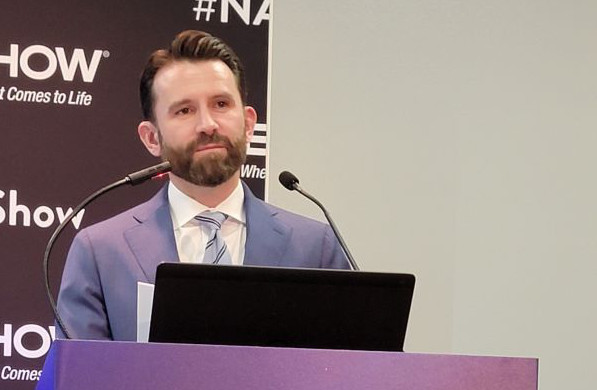Mirics’ FlexiTV PCTV receiver complies with NorDig specs

Mirics Semiconductor’s FlexiTV PCTV receiver now complies with the latest NorDig (the Scandinavian digital TV standards group) specifications for terrestrial digital TV.
Mirics is one of the first to achieve this designation with a software demodulation-based receiver. Mirics' product evolution illustrates the there's more than one way to trim down CPU-gobbling applications like signal demodulation.
Started as a fabless RF chip company by semiconductor and wireless industry veterans, Mirics opened its doors in 2004, when there was a lot of buzz about mobile TV but not many actual products.
"We quickly appreciated the plethora of [TV] standards in the market," said Mirics product line director Chet Babla. "What became apparent was that there weren't any multistandard demodulators."
The opportunity was big for anyone who could deliver a multistandard RF solution to OEMs that, in turn, enabled them to build standard products for a global market. "Our goal was to deliver a multistandard tuner at no premium in terms of cost or size or power," Babla said.
It's easier said than done. "The trick to multistandard [support] is reconfigurable circuitry. Because the nature of all these standards are so different, you burden the demodulation in terms of chip die size — not 2x, but it's not at zero premium," he said.
One way to tackle the adaptability issue is with software, which is inherently configurable. "Some suppliers were using DSP, so we thought: Suppose we used a 100 percent software demodulator solution," Babla said.
"But it's not easy to do, and do efficiently. You don't want to max out the CPU. But we had software and algorithmic expertise within the company — a novel combination of skills. [We could] leverage the DSP-like instruction sets available on the processor platform to ensure that the demodulation is very efficient," he said.
As the company was promoting its first software-based RF tuner in 2006, it began looking at PC OEMs as potential customers.
"The team looked at the x86 platform and spoke to notebook OEMs," Babla said. "PCTV seemed like an obvious application, so why isn't it taking off? In 2007, the attach rate [for PCTV] was 2 percent; in 2008, it was 5 percent. This year, it's expected to be between 7 and 10 percent."
The answer was that available solutions were, first, too expensive and, second, cost-prohibitive for international distribution. "In some cases, PCTV is being implemented with five chips," he said. "This adds $15 to the bill of material. That's why you're only seeing notebooks shipping with regional TV. OEMs are saying: We can't implement a platform strategy."
A few months later, Taiwanese wireless module company AzureWave signed on as Mirics' first customer. "They looked at it and straightaway they got it," Babla said. "Because you've obviated need for a demodulation chip, you've cut manufacturing and parts costs. Mirics solution — silicon and software — is under $3. Suddenly, a $5 bill of material becomes very practicable.
"Ultimately, a silicon-based solution, however flexible, cannot be as cost-effective as performing all the demodulation in software on an existing host processor and doing away with a chip that costs 'X' dollars," he said.
"For example, our DVB-T [support] complies with the new NorDig specification. With a purely hardware solution, you have to spin new silicon. All we have to do is redevelop the algorithm. You give new software to OEMs and, instantly, their product lines are upgraded. With hardware, you're looking at six to nine months."
And that processor load problem? Babla "doesn't buy" the argument that software demodulation will gobble up CPU. "We've field-tested DVB-T at less than 30 percent CPU load.
"Notebooks also have GPUs," he said. "You can offload some of the CPU load onto GPU."
Does Mirics feel pressured now that other players are jumping into the PCTV market? "I'm glad there are other players validating the concept. DiBcom Octopus is raising the profile of software demodulation. CrestaTech, Telegent — they're raising the profile of mobile PCTV."
For insight into the challenges of multistandard broadcast tuner design, download Mirics' white paper on the subject.
Get the TV Tech Newsletter
The professional video industry's #1 source for news, trends and product and tech information. Sign up below.
